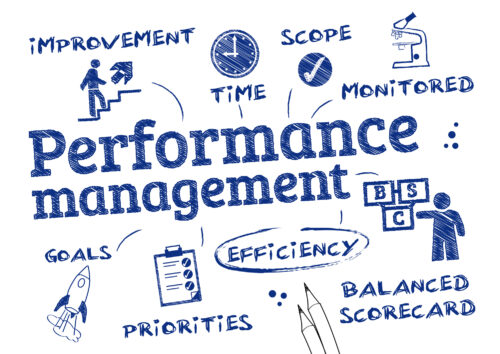Are the benefits of paraoptometric certification worth the investment for your practice? Would it bolster patient attraction and elevate your practice’s reputation? Or does the certification of technicians lack sufficient merit? Are your optometric technicians presently certified? If not, should they be? These are pressing questions often debated among private practitioners and technicians themselves, each holding varied viewpoints on the matter.
Advocates of paraoptometric certification argue its manifold advantages, contending that it enhances patient care, augments patients’ regard for your practice, fosters employee loyalty, and curtails turnover. Within many practices, optometric technicians shoulder an extensive array of responsibilities, including pretesting, visual field testing, retinal photography and imaging, frame and lens selection, adjustments, contact lens management, front office operations, and the triage of eye emergencies.
Given the breadth of their duties, should they not possess some form of formal endorsement or qualification? Conversely, some practitioners question the necessity of certification if comprehensive in-house training is already provided. They ponder why they should navigate the hurdles of obtaining a designation that merely adds a stamp of approval. Furthermore, they weigh the rationale behind subsidizing the expense of training a technician who might eventually depart for a higher-paying position elsewhere. Let’s delve into both perspectives of this often overlooked yet critical issue.
Proceeding without “Paras”
Despite the availability of paraoptometric certification, some optometrists find that the extensive in-house training they provide for newly hired technicians and doctor’s assistants suffices. An Optometrist in Columbus, Ohio, relies on non-certified optometric assistants and opticians to scribe and conduct pretesting. He notes that most new technicians in his two practices typically commence with scribing before advancing to pre-exam tasks, and currently, none of his staff members hold paraoptometric certification. Why forego certification? Many staff members do not perceive it as a requisite for productivity in their field. They believe that on-the-job training coupled with professional experience are the keys to success and competence. Other optometrists had opticians or the doctors themselves handle pretesting in the past.
It was only recently that they deemed it necessary to engage a doctor’s assistant. However, they have yet to mandate paraoptometric certification for the optometric assistant. As workload intensified, opticians found themselves juggling multiple tasks concurrently, raising concerns about maintaining seamless continuity of care while keeping the team focused. Consequently, they enlisted a doctor’s assistant to manage patient check-ins, address patient queries, and conduct pretesting. Subsequently, the doctor’s assistant ensures continuity of care by transitioning patients to opticians, checking them out, and fulfilling any orders from the doctor. The addition of a doctor’s assistant has significantly enhanced practice efficiency by alleviating the doctor’s burden of locating available staff and enabling each team member to provide undivided attention to patients.
Optometrists in Easton, MD, have observed firsthand the benefits of employing certified personnel. Notably, their technicians adeptly handled the triage of a patient who contacted their office on a Saturday, exhibiting symptoms suggestive of a retinal detachment.
The patient hesitated to leave work and visit the office, compounded by concerns about non-coverage by their insurance. Technicians facilitated the triage and reassured the patient of the urgency, accommodating an immediate appointment. Subsequently diagnosed with a retinal detachment, the patient promptly received treatment from a local retinal specialist, preserving their vision. Without knowledgeable technicians understanding the urgency and symptoms of retinal detachment, the patient’s care might have been delayed.
Certified staff signal to patients a commitment to superior care, service, and overall experience. Moreover, staff perceive their roles as careers, not just jobs.
Though challenging to recruit certified paraoptometric technicians, optometrists are advised not to be deterred from aiming for full certification in their office. In areas where Paraoptometrics are scarce, recruit staff members with exceptional service skills and provide on-site training. Upon readiness, encourage them to pursue certification and pass the requisite exams.
Optometrists advocate for the adoption of paraoptometric certification in their practices. Certification underscores professionalism, instills patient confidence, and bolsters employee morale and self-assurance. It can also serve as a deterrent to turnover.
A Proponent of Paraoptometric Certification
Tamara Franklin, Chair of the AOA’s Commission for Paraoptometric Certification (CPC), champions the pursuit of paraoptometric certification by optometrists and their staff, echoing her own journey.
“Paraoptometric certification signifies optometric staff’s attainment of a standardized knowledge level to deliver patient care,” Mrs. Franklin explains. She emphasizes that certification mandates ongoing competency enhancement, crucial for elevating patient care.
She contends that certification not only enriches patient care through continuing education but also fosters team camaraderie. “Certification fosters a learning environment that enhances patient care as a team,” she elaborates. “My optometrist and I operated as a team, dedicated to providing the best care to all our patients. After achieving my Certified Paraoptometric Technician (CPOT) certification, I leveraged it not only for medical practice but also for further education in low vision and vision therapy.”
Mrs. Franklin underscores the pivotal role of optometrists in facilitating technician and assistant certification. “Optometrists often underestimate their influence in this realm. Pursuing paraoptometric certification should be a priority for all optometric staff and physicians,” she asserts. “I encourage all optometrists to institute a continuing education program for their staff that includes a path to CPOT certification, should employees desire it.”
According to Mrs. Franklin, paraoptometric certification not only advances patient care but also augments business viability. “In our evolving healthcare landscape, paraoptometric certification holds greater significance than ever before,” she concludes.
EyeAppoint can alleviate the burden on your technicians and staff by streamlining numerous processes through a robust automation system. Explore our services to see how EyeAppoint can enhance your practice!

















